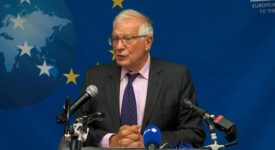The new EU cohesion policy for the 2014-2020 period was endorsed last week (Nov 7) by the EU Commission and EU ministers. The 325-billion-EUR deal is meant to be the main financing tool for Europe’s regional development. The agreement now goes to the Parliament for a vote probably in mid-November as the policy should enter into force just before this year’s end.
According to the Chair of the Committee on Regional Development, Poland’s Danuta Hübner, the cohesion funds should be the main financing support for regions during the economic crisis. She also expressed her satisfaction that the EU institutions were capable of agreeing on key areas in which most investment under the cohesion policy should go to. The new regional agenda envisages more investment in greener projects, and focuses mostly on regional sustainable growth and job creation.
Johannes Hahn, the Regional Policy Commissioner, said that the policy would be an important step forward and a powerful tool for equipping the EU’s real economy for fight against the crisis. He also emphasized that the original ideas of the Commission regarding the new cohesion plan have been left almost untouched by the EU Council and Parliament, which is a success after many round talks between the three institutions.
The main objective of the new regional policy still remains to support Union’s less developed regions, basically including not only all new member states but also westernmost part of Great Britain or Southern Italy. The biggest recipient of cohesion funding is still Poland with about 70 billion EUR followed by Italy with about 30 billion EUR. Yet, the conceptual side of the deal has changed compared to previous years. In 2014-2020, the Commission expects that more projects will be focused on innovation, R&D, efficiency, energy sustainability, green issues, development and poverty reduction. Moreover, the new policy allows for greater flexibility in terms of financing, multi-party projects and thematic focus.
Article Categories:
INSTITUTIONS & POLICY-MAKING






